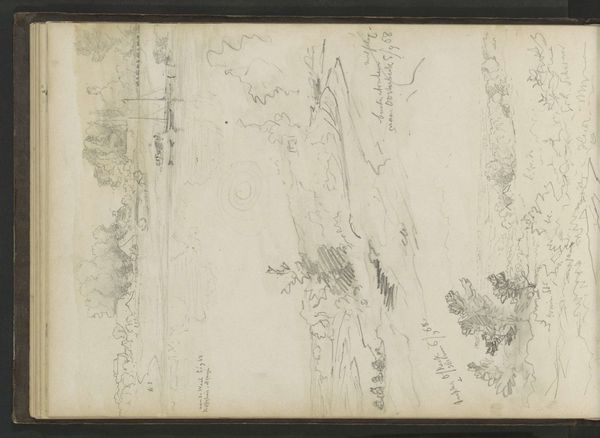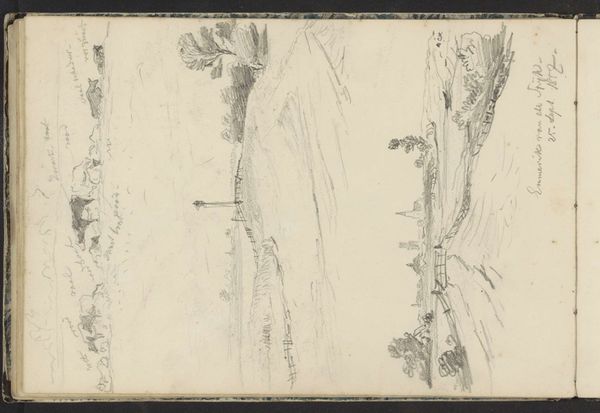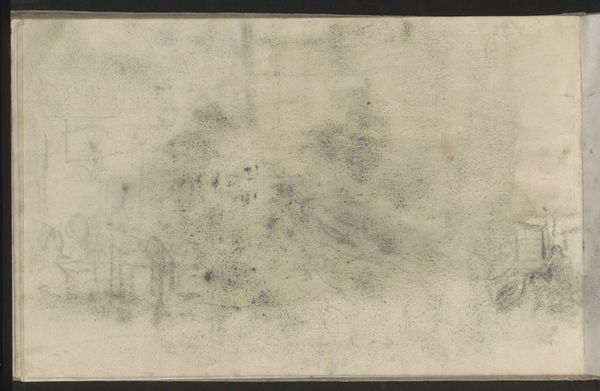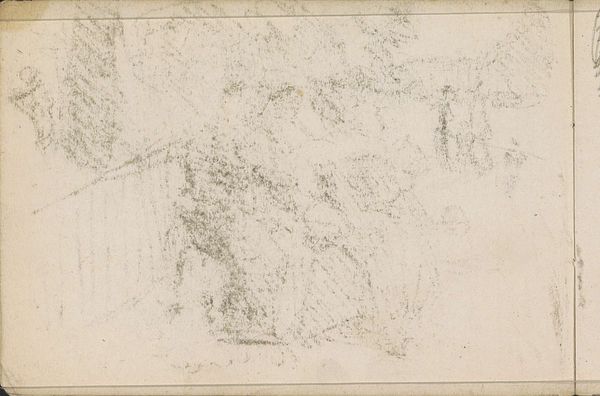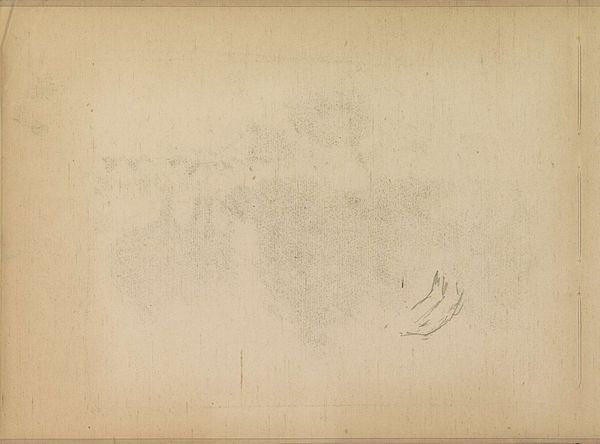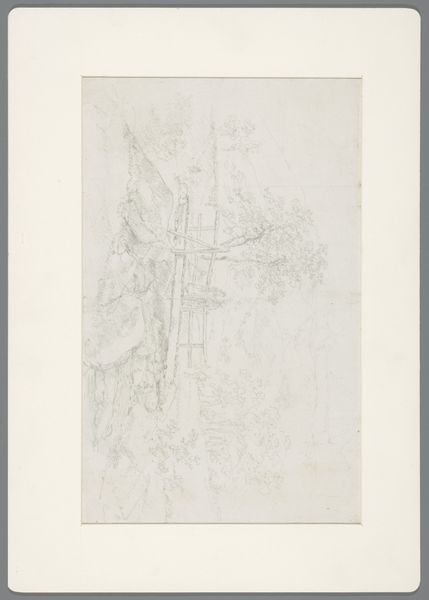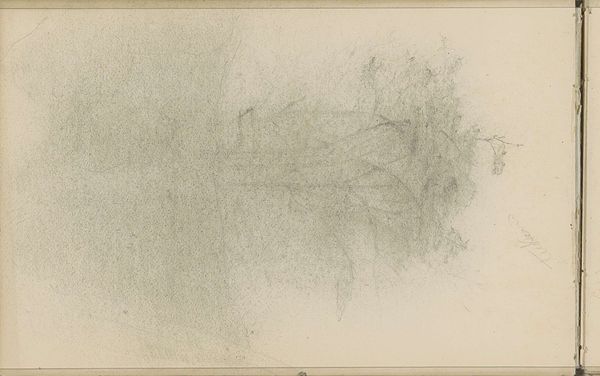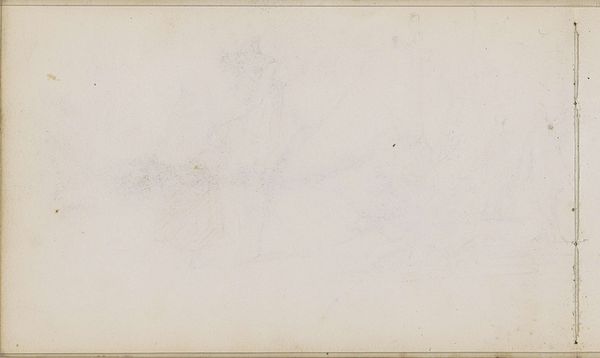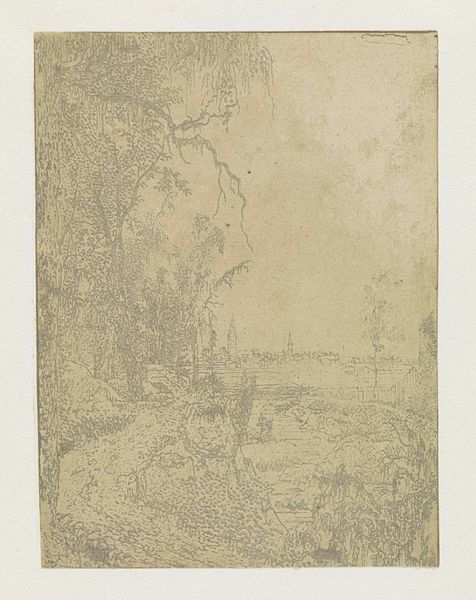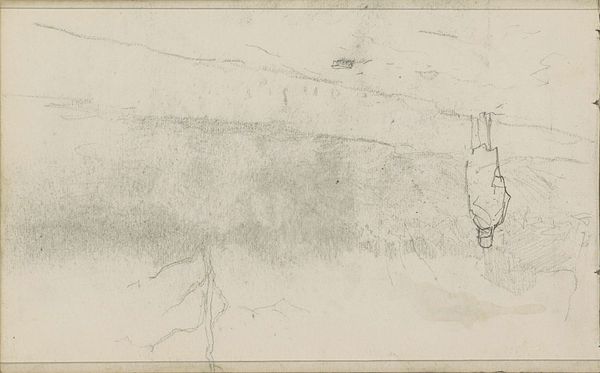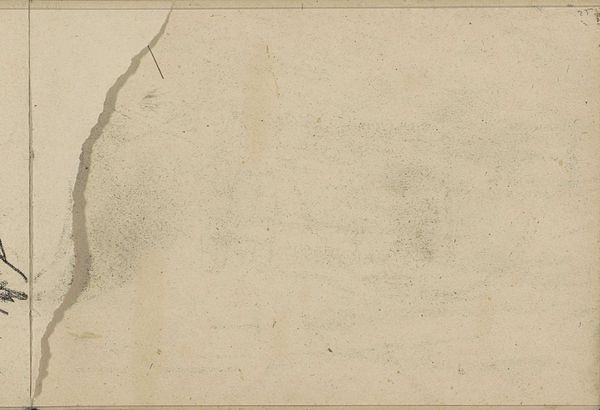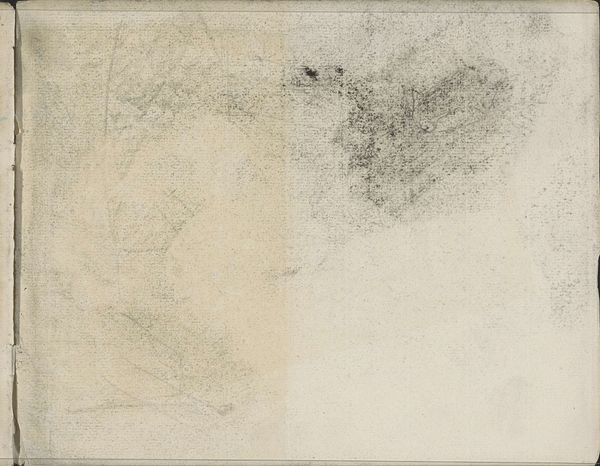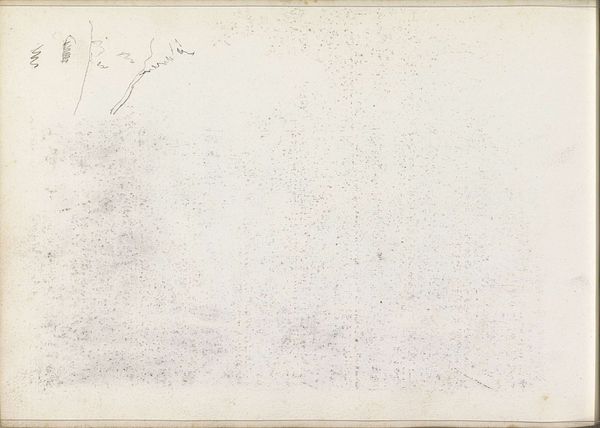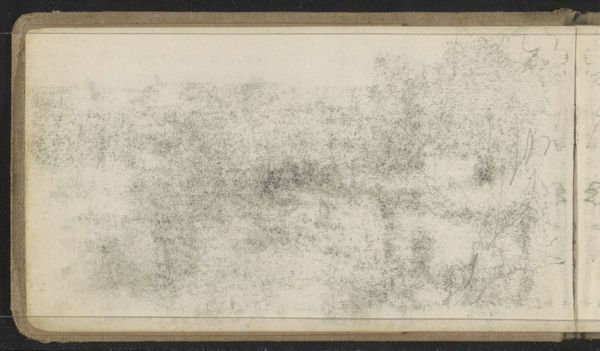
Copyright: Rijks Museum: Open Domain
Curator: Gazing at this image, my immediate impression is of a fragile beauty, a delicate record of an imposing landscape. Editor: Indeed. This is "Views of the Barents Sea with Icebergs," a drawing by Louis Apol, created around 1880. It's rendered in pencil and colored pencil on paper and housed here at the Rijksmuseum. Curator: Apol captures the sublime vastness of the Arctic. We can feel a sort of Romantic melancholy in his depiction of these icy forms adrift in a seemingly boundless ocean. The relatively loose style contributes to that dreamlike feeling. Editor: Precisely. I see how Apol has prioritized capturing the light on the ice and the ethereal atmosphere over precise details. There is such sensitivity in the varying pencil weights, creating tonal variety. Curator: It’s fascinating to consider Apol's engagement with themes of exploration and the representation of the natural world in Dutch art of that period. He was known for his winter landscapes, so one might wonder about his personal experiences in polar regions that influenced this drawing. Editor: Perhaps. Yet one must note the role of institutional commissions that prompted this trip. The drawing itself may be more akin to the artist's imagination of a distant place and not necessarily an entirely truthful rendition. The marks and gestures that capture light on water is reminiscent of Symbolist paintings. Curator: I think what strikes me most is its subtle environmental message. Even in 1880, portraying such landscapes makes one think of fragility, about preservation, even if unconsciously at the time. The simple media used enhance the drawing's transient mood. Editor: You know, I completely agree. Thinking about the materials, it certainly speaks volumes—how these sketches, ephemeral in nature, evoke feelings of fragility in contrast to the permanence of icebergs. Curator: An apt interpretation, I think! It just highlights the multi-faceted nature of experiencing art, both within its time and what meanings can still resonate today. Editor: Agreed. And I think we've explored how even what appears as a modest drawing like this offers endless layers of meaning.
Comments
No comments
Be the first to comment and join the conversation on the ultimate creative platform.
